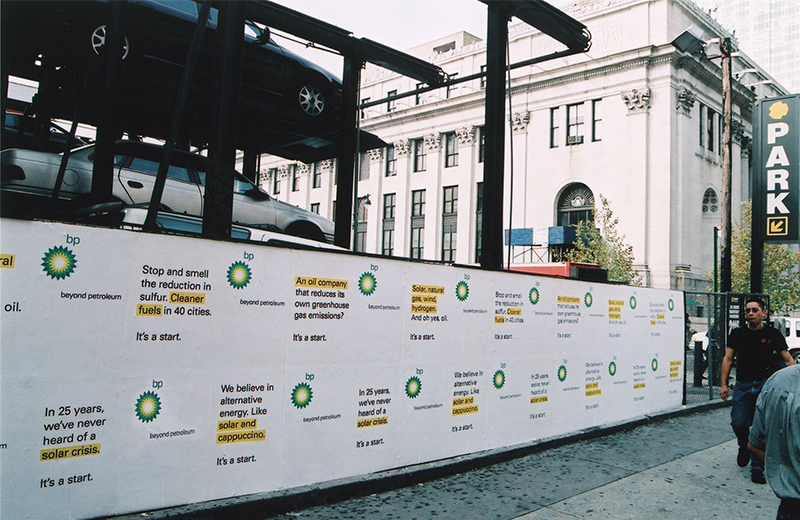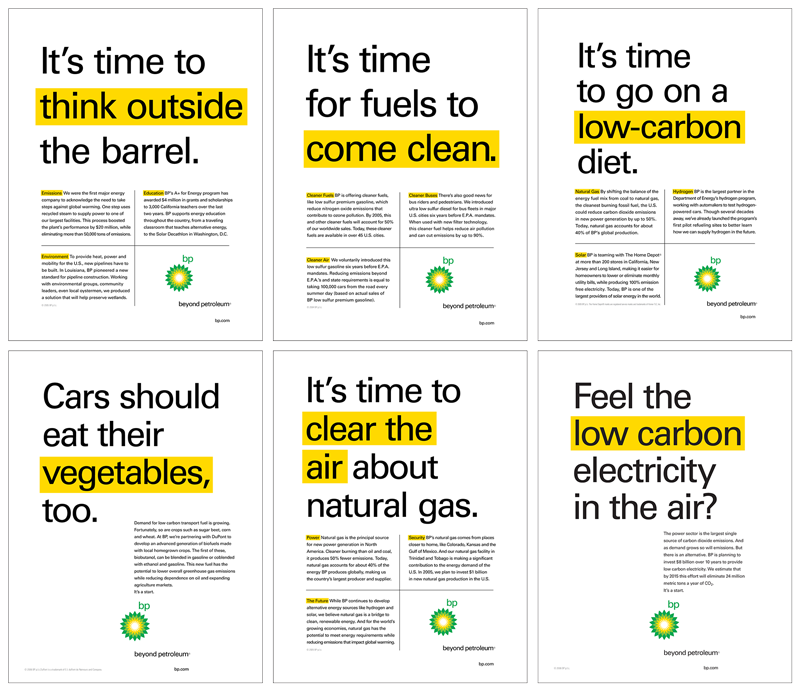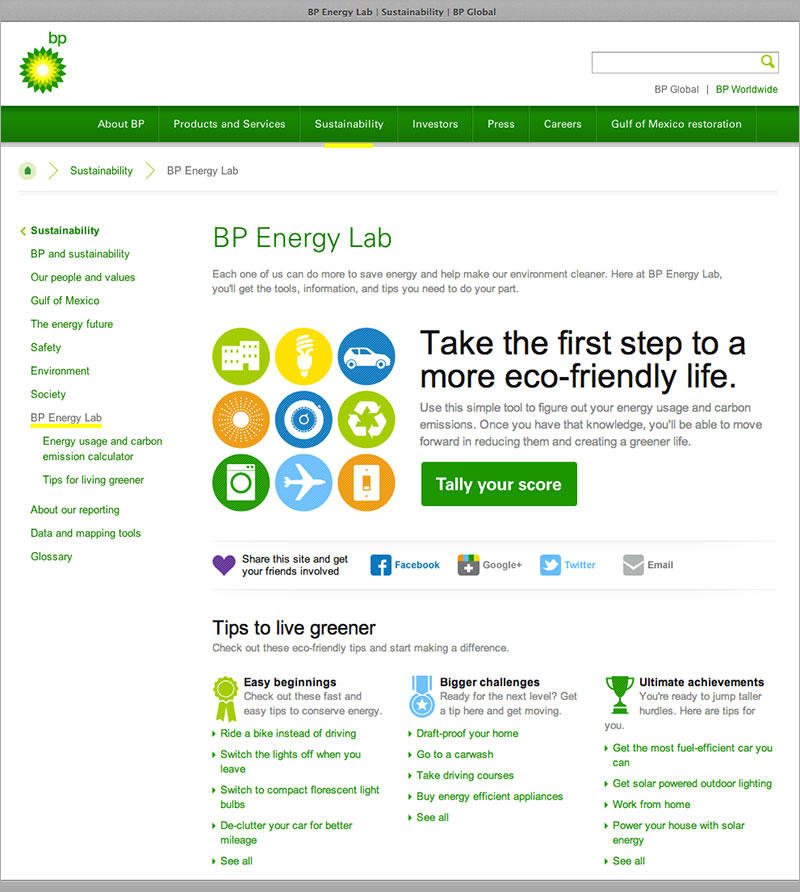bp
From the start, Ken Shuldman and I decided the thread for BP’s Beyond Petroleum print and outdoor campaign was ‘messages, not ads.’ Just a yellow highlighter to underline what was most important, like high school. In TV, it was the conversation about energy that cut through. So we talked to people around the world and started a dialogue. The campaign moved BP into the number one slot on Fortune’s most admired list in Petroleum. Next we introduced the idea of a ‘carbon footprint’ before it was a common buzzword by asking people if they knew their own and directing them to our online calculator. The calculator received more than 1 million hits in its first 6 months. The campaign won a Gold Effie for 5 years of sustained success, the first energy campaign to do so. As the challenges of the energy sector evolved, so did BP. We developed an ‘all of the above’ strategy, before any presidential candidates spoke of the same, featuring energy diversity and a set of energy icons. We redesigned the calculator and launched the Energy Lab, an interactive tool and information center to figure out how to live a greener life using all energies on bp.com. The campaign and energy icons continue around the world, having presence in China, Brazil, Mexico, India and more.

Interviewing people in cities all over the U.S., we started a dialogue, asking people to speak about energy. Dozens of commercials ran.
Hundreds of ads appeared in NY Times, WSJ, Washington Post and other publications in major cities.
We were the first major company to put the words ‘carbon footprint’ into the vernacular as it ran worldwide.
There’s energy security in energy diversity. During the next phase of the campaign, we developed a set of icons representing each of the energies in BP’s portfolio.
We created pre-rolls and began advertising online.
This “all of the above” energy strategy was co-opted by politicians in 2008.

We redesigned the BP Energy Lab to have the same design aesthetic as the icons.

The campaign spread around the world, and still runs in some countries.
![]()
In 2010, BP was on top. Ever since 2005, when it had become the first energy company to acknowledge global warming and recognized that the world needed to move “beyond petroleum,” it had been gaining more and more respect and brand value. This peaked in April 2010 when BrandZ, citing its environmental leadership, named it the 34th most valuable brand in the world, ahead of all other energy brands. But just days later, an explosion in the Gulf of Mexico killed eleven workers and started the worst oil spill in U.S. history. This is when the corporate advertising campaign stopped.
